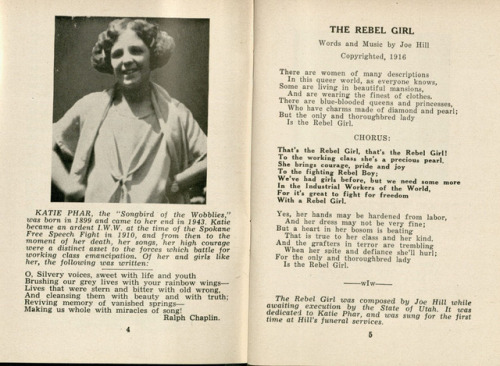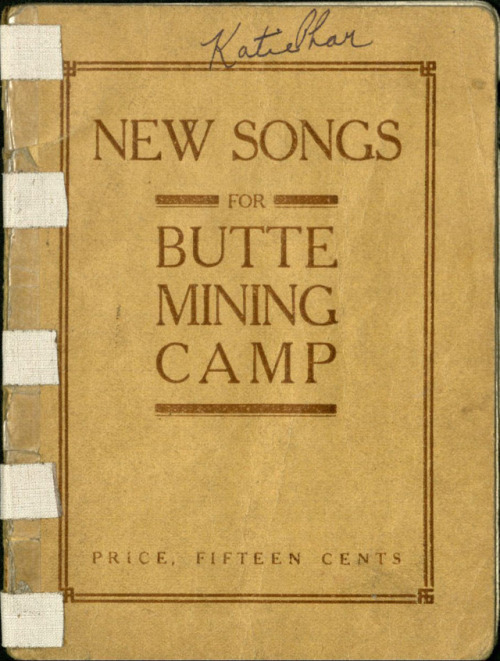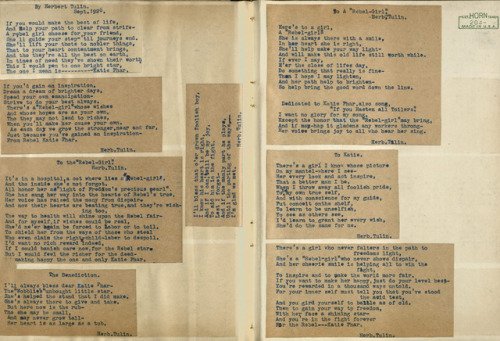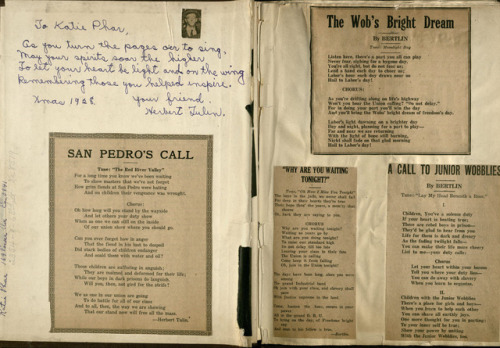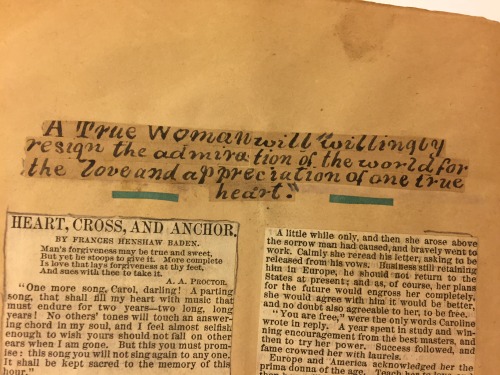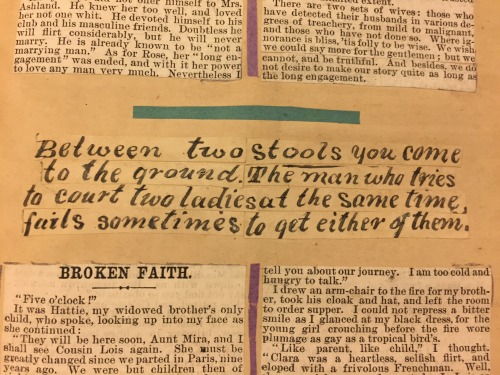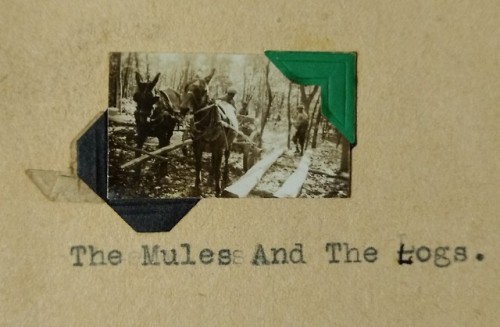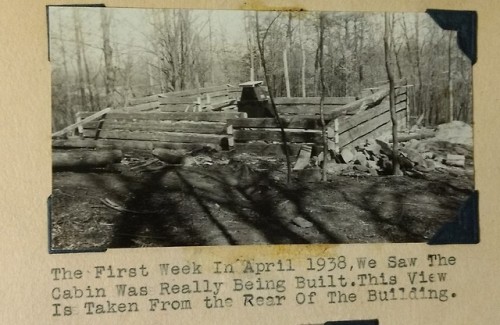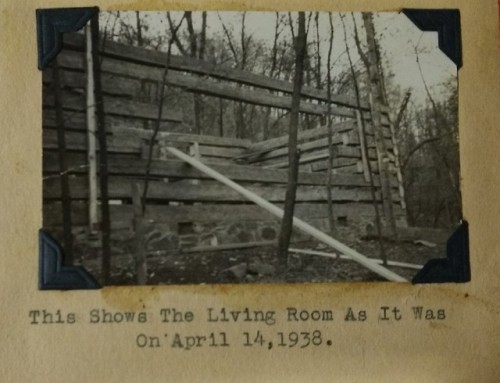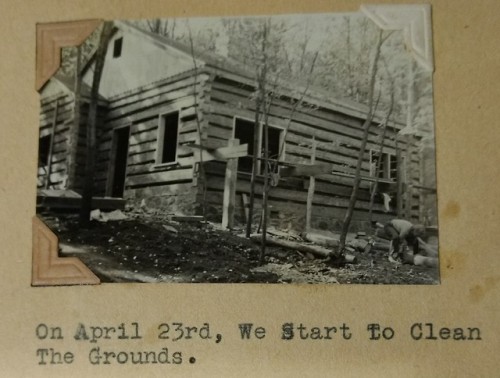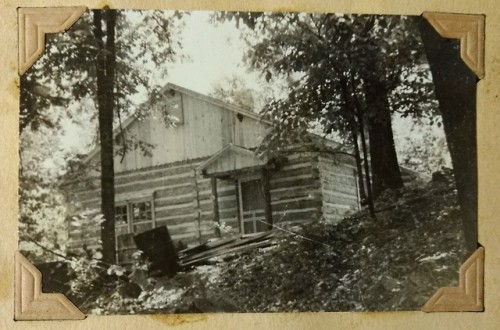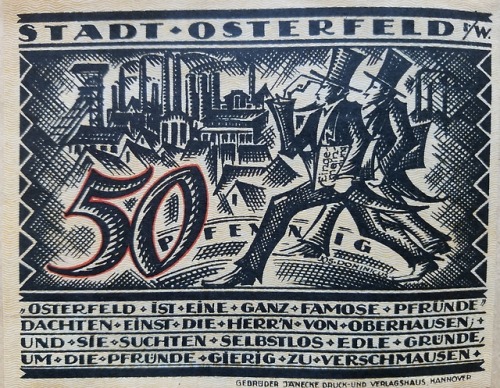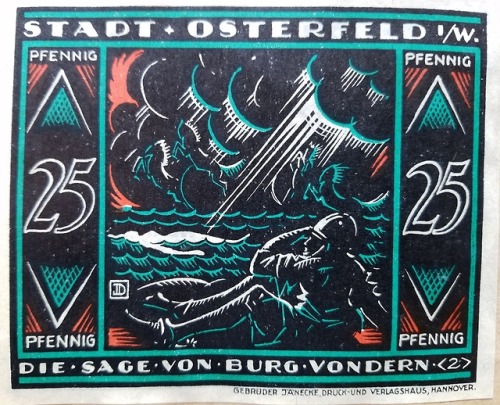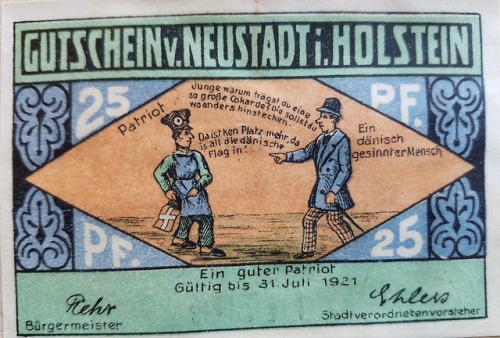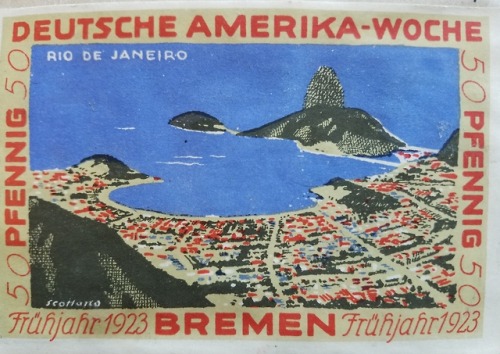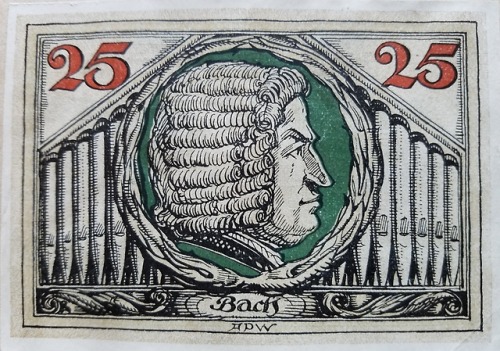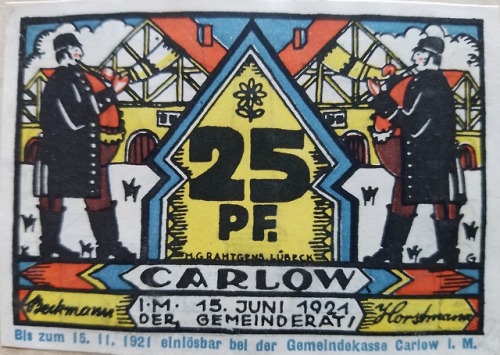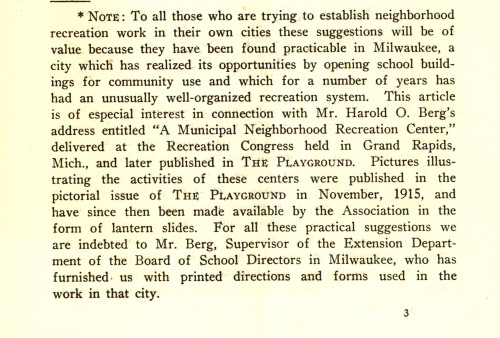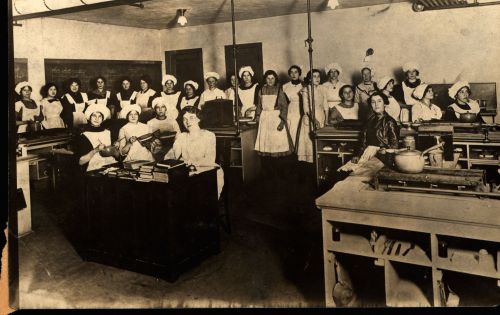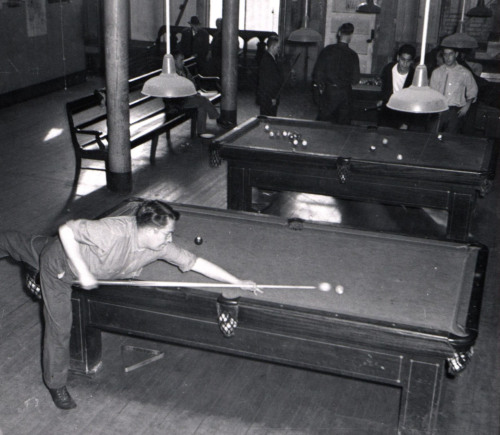#scrapbooks
Read more about Katie Phar, the IWW songbird, on the Southern Folklife Collection blog today. The materials discussed are cataloged or processed and available at Wilson Library: http://blogs.lib.unc.edu/sfc/index.php/2017/10/12/katie-phar-songbird-of-the-wobblies/
Post link
We spent a few minutes combing through a curious scrapbook in the papers of Braxton Craven (considered Duke’s second president, he led the institution from 1842 to 1863 and then from 1866 to 1882).
It contains sentimental and moralizing love stories clipped from newspapers and magazines. Many of the stories are accompanied by handwritten summaries of their key lessons–and here are some of the best ones for your edification. (You’re welcome.)
Lest you think that this guy doesn’t look susceptible to this sort of story, let me remind you that one of his claims to fame is as the author of “Naomi Wise: Or, The Wrongs of a Beautiful Girl,” the story of a Randolph County, NC murder that became the basis for the oldest known American murder ballad.
Post link
A sketch of a studying student, ca. 1930-1933. (Yes, it’s summer and no one wants to think about studying, but it’s too cute not to share!)
From the Kay Brownlee scrapbook.
Post link


A scrapbook, in essence, is many times a volume of repurposed works of art. Sometimes the scrapbook itself is repurposed. This one is both.
Homemade paper dolls clipped from periodical fashion plates, handmade wardrobes and dressers, and clothing made from colored tissue paper fill the pages of this 1870s geography textbook. With a pasted label warning, “this book must be covered, not be scribbled upon, kept clean, and paid for if not returned when demanded” during its time as a textbook, it is imperfectly perfect in form and function as a work of “idiosyncratic” art and an historical visual material.









These fabric samples were compiled and mounted into four books by accomplished dye-master Robert A. Fisher, alongside the detailed recipes used to create the vibrant patterns. All created between 1848-1855, the colors remain bold and brilliant, having been protected for so long from the fading effects of light.
Robert A. Fisher. Madder Colors I & II, Steam Colors, Miscellaneous Colors. (n.p., 1848-1855)
In the late 1930s, the Athletic Association built an Outing Cabin for students to use when they wanted to get away for a while. Here are some highlights from their scrapbook (complete with engraved wooden cover!).
Post link








Conservation Technician, Brooke Adams, describes the complex treatment of an International Good Roads Tour Scrapbook, part of SCRC’s Transportation History Collection. The scrapbook was compiled by William Sydnor Gilbreath Sr., a businessman and strong supporter of the Good Roads Movement (GRM). The scrapbook was created during Gilbreath’s participation in the 1920 International Good Roads Tour through Michigan and southeastern Ontario.
Scrapbook
Colors: Any
Motifs: Scrapbooks, scrapbook art, scrapbook paraphernalia

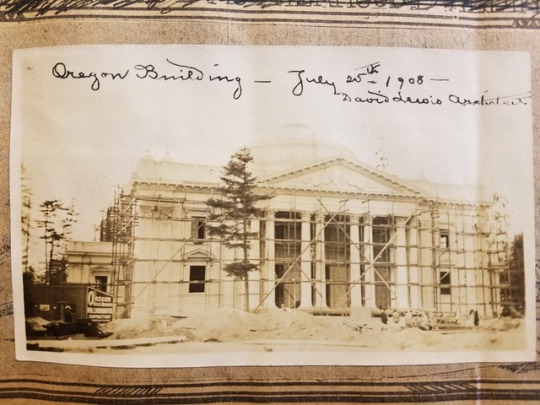
We just discovered a photograph we haven’t seen before of the Oregon Building under construction for the 1909 Alaska-Yukon-Pacific Exposition hidden in a scrapbook put together by the Director of Exhibits Henry E. Dosch…
To provide better access for users of our special collections we’ve recently refined our cataloging of selected materials, including this beautiful and fantastic scrapbook of emergency currency that was issued in various cities in Germany and Austria during and immediately following WWI. Called notgeld, these small bills reflect the financial chaos and inflation that occurred during that tumultuous time. Yet they also reveal the great visual skills by artists to produce these handsome works, just a few from our scrapbook pictured here…
Post link
In 1918, Harold O. Berg, supervisor of theMilwaukee School Board Extension Department, published this 23-page booklet called “Practical Aids in Conducting a Neighborhood Recreation Center.” It offers suggestions to directors of recreation centers on how to conduct a range of social activities that include basketball and indoor baseball, quiet game rooms, dancing classes and socials, and library readings rooms. As is noted at the start of the booklet, recreation centers played a major role in Milwaukee because recreation was recognized as an essential aspect of education.
The city’s Municipal Recreation and Community Education program was established in 1911 and the first two social centers, operated from Milwaukee schoolhouses, were opened in 1912. By 1948, forty social centers were in existence in all areas of Milwaukee, and they offered more than one hundred different activities that included drama clubs, music organizations, athletics, games, club activities, and arts and crafts. Many of those activities followed the gender norms of the time, as is noted in the photographs. The women and girls from the Forest Home Social Center are pictured at cooking and dancing classes (dated 1900-1930), while their male counterparts at 923 Market Street are pictured playing checkers and billiards (dated 1954).
Most of the work of the Extension Department was on behalf of young people, 17-23 years old, who fell outside of the regular school system and who typically worked during the day and had increasing amounts of leisure time at night. In essence, one of the major goals for Milwaukee’s social centers was keeping young people occupied and out of trouble.
More information and photographs of Milwaukee’s recreation history can be found at UWM Archives in the Milwaukee Public Schools, Department of Municipal Recreation and Community Education Scrapbooks collection, 1923-1989.
“Practical Aids in Conducting a Neighborhood Recreation Center,” along with the photographs from the Forest Home and 923 Market Street social centers, are available in Box 36 of the collection.
Call number: UWM Manuscript Collection 151
-Jamee, Archives Graduate Intern
Post link

